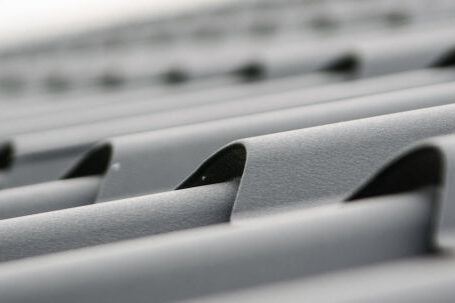Whether you live in a scorching hot desert or a freezing cold tundra, having efficient home insulation is essential. Not only does it help keep your home comfortable year-round, but it also saves you money on energy bills. If you’re looking to improve your home’s insulation, here are five tips to get you started.
1. Seal Air Leaks
One of the most common culprits of energy loss in a home is air leaks. These leaks allow warm air to escape during winter and cool air to escape during summer, making your heating and cooling systems work harder. To combat this, it’s important to seal any air leaks in your home. Start by checking for gaps around windows and doors, and use weatherstripping or caulk to seal them. Additionally, don’t forget to insulate any gaps around pipes, vents, and electrical outlets.
2. Insulate Your Attic
Did you know that up to 30% of your home’s heat is lost through the attic? That’s why insulating your attic is crucial for efficient home insulation. Start by adding insulation to the floor of the attic to prevent warm air from escaping through the roof. You can use fiberglass batts, blown-in cellulose, or foam insulation for this purpose. Additionally, consider insulating the walls and roof of the attic for maximum efficiency.
3. Use Window Treatments
Windows are another major source of energy loss in a home. To prevent heat from escaping during winter and entering during summer, it’s important to use window treatments. Install thermal curtains or blinds that provide an extra layer of insulation. These treatments help to keep the warm air inside during winter and block out the heat during summer, reducing the workload on your heating and cooling systems.
4. Insulate Exterior Walls
Insulating your exterior walls is another effective way to improve home insulation. This is especially important if you live in an older home that may not have sufficient insulation. There are several options for insulating exterior walls, including blown-in insulation or foam insulation. Consult with a professional to determine the best insulation method for your home’s specific needs.
5. Consider Insulating Your Floors
While often overlooked, insulating your floors can make a significant difference in your home’s energy efficiency. This is particularly important if you have a crawl space or basement underneath your home. Insulating your floors can help prevent cold air from seeping into your home during winter and reduce heat transfer between floors. You can use insulation batts or foam boards to insulate your floors effectively.
In conclusion, having efficient home insulation is essential for maintaining a comfortable living environment and reducing energy costs. By following these five tips, you can improve your home’s insulation and enjoy a more energy-efficient home. Remember to seal air leaks, insulate your attic, use window treatments, insulate exterior walls, and consider insulating your floors. With these measures in place, you’ll be well on your way to a more efficient and comfortable home.





